
This parent guide supports parents in helping their child at home with the 8th grade Science content.
- Subject:
- Science
- Material Type:
- Reference Material
- Vocabulary
- Author:
- Kelly Rawlston
- Letoria Lewis
- Date Added:
- 10/11/2022

This parent guide supports parents in helping their child at home with the 8th grade Science content.

This resource accompanies our Rethink 8th Grade Science course. It includes ideas for use, ways to support exceptional children, ways to extend learning, digital resources and tools, tips for supporting English Language Learners and students with visual and hearing impairments. There are also ideas for offline learning.

In this lesson, students understand the interactions between organisms living in an environment, and how energy flows from one organism and trophic level to another.

Students learn about methane hydrate ice worms and hydrate shrimp, including how they obtain their food and interact with other species in deep sea ecosystems. Students will work in collaborative groups to research these organisms to develop hypotheses about the relationship between methane hydrates, ice worms, and hydrate shrimp and present their hypotheses to the class. In an extension activity, students will construct models of methane hydrate molecules.

In this lesson, students become scientists who are studying the components of a Bald Eagle's diet. They will collect data by pulling prey chips from an envelope and recording data. They then graph and draw conclusions about what an eagle eats based in their research data and share their conclusions with the class.
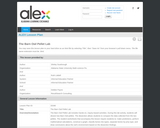
Students will dissect two Barn Owl pellets and compare the data collected from the two pellets. The student worksheets that accompany this lesson require students to: make predictions, perform mathematical calculations, construct a graph, classify bones into types, separate bones by prey type, and draw conclusions about the owl's environment based on the dissection findings.

Students take on the role of migrating birds. By participating in a physically active simulation, they experience the journey from summer breeding grounds to winter feeding grounds. As the activity progresses different scenarios affect these areas and the ability to successfully migrate.
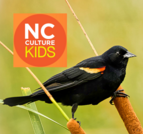
In this short video, join Emily and Emma from the Prairie Ridge Ecostation in Raleigh to take a look at some birds and learn about how we can observe all kinds of wildlife in our everyday lives.
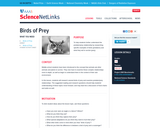
Students research specific examples of birds (predators) and what they eat to survive (prey) to help them better understand the predator/prey relationship.

Students will construct aquatic habitats in plastic bottles. They will observe the habitats for a period of four weeks and record what they see - changes in population, plant and animal growth, and water quality.
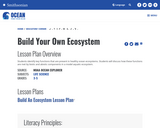
Students will create a model aquatic ecosystem and make regular observations over a period of time. They will also work collaboratively to conduct research on common ocean health issues and summarize their findings in a written report.
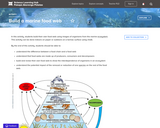
Students build their own food web using images of organisms from the marine ecosystem. This activity can be done indoors on paper or outdoors on a tarmac surface using chalk.
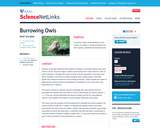
Students use the example of the Burrowing Owl to illustrate how human activities can control the fate of a species. In addition to exploring the negative impact community development has had on the owl's habitat, students will read about proactive steps people have taken to reverse this destruction.

In this lesson, students run a simplified computer model and create board games to explore how climate conditions can affect caribou - the most abundant grazing animal in the Arctic.
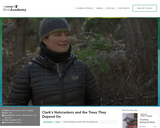
This video describes the mutualistic relationship between the Clark's nutcracker and the whitebark pine tree and how this relationship may be being impacted by climate change.

In this lesson, students compete for basic needs in an active game. Afterwards they observe and write about how trees compete with one another for their basic needs.

Students create a marine ecosystem and describe the adaptive, trophic, and symbiotic relationships between the biotic and abiotic components of the ecosystem.

In this activity, students will simulate the interactions between a predator population of gray wolves and a prey population of deer in a forest. After collecting the data, the students will plot the data and then extend the graph to predict the populations for several more generations.
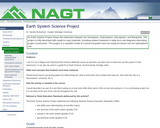
Students will construct an ecocolumn and use it to study the interaction between the geosphere, hydrosphere, atmosphere, and biosphere.

In this lesson, students explain how biotic and abiotic factors affect organisms in an ecosystem and describe the different types of relationships that occur between organisms in an ecosystem, with emphasis on the predator-prey relationship.